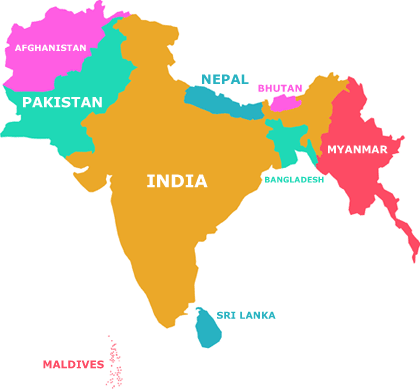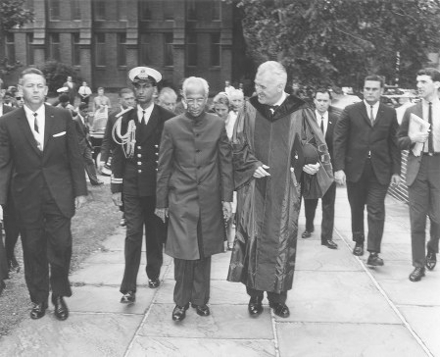
The study of South Asia at the University of Pennsylvania has a history that stretches back over a century. Generations of the country’s top scholars of South Asian literature, society, history, art and religion have been trained at Penn. Sanskrit was studied at Penn as early as the 1890s and a full time Sanskrit position was first established in 1912 with the appointment of Franklin Edgerton. When Edgerton left in 1926, Professor William Norman Brown (1892-1975) was appointed as Chair of Sanskrit, and over the next thirty years profoundly changed the study of South Asia in the United States. Moving beyond the established study of Sanskrit, Brown worked tirelessly throughout the 1930s to increase the number of teaching positions and programs focusing on South Asia across numerous disciplines at the University of Pennsylvania and beyond.
By the end of World War II, the US Army Specialized Training Program was created to train personnel in the languages and cultures of the areas to which they were posted, and Penn became the national site for the India program in 1943-44. Using this program as a model, Brown devised a summer program of study, providing an interdisciplinary view of India’s culture, history, politics, and economics. In 1947, Brown realized his long awaited dream with the offering of an experimental summer program at the University of Pennsylvania called “India: A Program of Regional Studies.” During the summer and fall of 1947, the Carnegie Corporation of New York, and the Rockefeller Foundation provided substantial grants to Penn, allowing for a fuller implementation of Brown’s vision. The first academic department devoted exclusively to the study of the South Asia region in the United States was thus founded at Penn. Offerings were expanded over the next two years finally culminating in an operationally “complete” program for the 1949-50 academic year. Following the founding of Penn’s South Asia studies department, similar moves were made at the University of California (Berkeley), the University of Chicago, and Columbia University. Brown continued to be an important figure in the national effort to define, organize and implement “international area studies” on an interdisciplinary model, and lobbied for the continued support of Area studies by the US Department of Education. In 1961 the American Institute of Indian Studies, an organization which awards junior and senior fellowships for advanced research in India, was founded at Penn by Norman Brown.
Though funding for South Asian Studies was meant to support the development of US policy agendas in a decolonizing world, South Asia Studies as an academic entity, like other Area Studies fields, never conformed closely to these parameters and evolved diversely in different university settings, with different and varying configurations of languages and the mainstream disciplines like history, anthropology, religious studies, and political science. Penn continued to be a leader in the field of South Asia studies in the 1960s and 70s, as disciplines outside the department also introduced positions focusing on South Asia. In the late 1980s Penn was at the center of debates regarding the critiques of both “Oriental Studies” and “Area Studies,” and was very much at the forefront in the search for more relevant perspectives. If the “Oriental Studies” model, rooted in European colonialism, had prioritized language over discipline, and the model of Area Studies, rooted in US imperialism, had privileged discipline over language, a revitalized South Asia Studies Department at Penn has sought to develop a new model in which languages and disciplines interacted in a dynamic interplay. The department has thus sought to combine strengths in philology and language with critical perspectives drawn from a range of humanities and social sciences disciplines. At present, one can study Sanskrit, Tamil, Telugu, Kannada, Malayalam, Hindi, Urdu, Bengali, Punjabi, Marathi, and Gujarati at Penn, as well as take courses in the disciplines of History, Literature, Anthropology, Performance Studies, and Religious Studies.
Today, Penn’s South Asia Studies program is globally acknowledged as one of the most intellectually robust and innovative area studies programs in North America. It is defined by its strong commitment to interdisciplinary, which has always been a hallmark of this program throughout its rich history. As a hub for the study of South Asia in America, the program attracts a broad and diverse set of students and faculty from around the world. Our graduate program offers rigorous training that provides a strong foundation for doctoral studies and advanced research. We engage deeply with cultural, political, and social developments that have shaped the region, and produce cutting-edge research centered on both historical currents and the contemporary cultural realities of South Asia.

 South Asia Studies
South Asia Studies